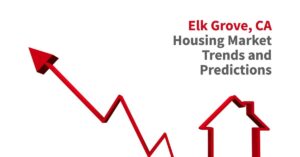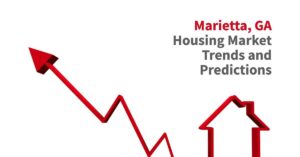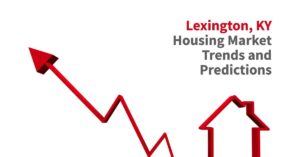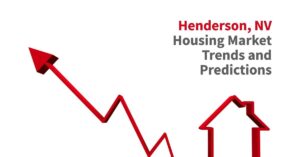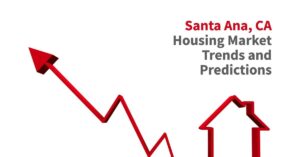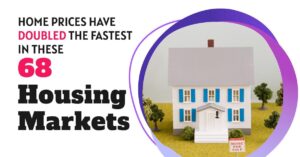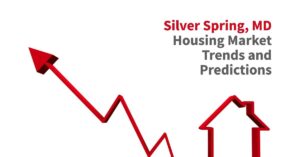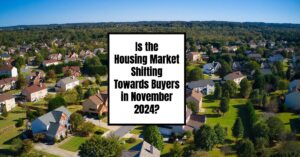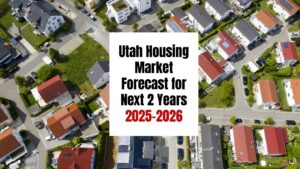The Elk Grove housing market in 2024 is showing signs of a slight slowdown after a period of rapid growth. While the median home price is still relatively high, it has seen a minor dip compared to last year, and the days on the market have increased. This suggests that the market might be shifting slightly towards a more balanced state, potentially offering opportunities for both buyers and sellers. Let's delve deeper into the specific trends influencing the Elk Grove real estate scene.
Elk Grove Housing Market Trends in 2024: A Comprehensive Look
Home Sales
The number of homes sold in Elk Grove has seen a notable increase year-over-year. According to Redfin, in October 2024, 117 homes were sold, a significant jump from the 95 sold in the same month last year, representing a 23.2% year-over-year growth. This rise in sales signifies a continued demand for housing in the Elk Grove area, even with the slight price adjustments.
In my experience, the local economy and job market in Elk Grove remain strong, attracting new residents and driving demand for properties. The area's excellent school system and family-friendly atmosphere also play a significant role in drawing buyers.
However, it's important to note that the increased sales volume could also be partially attributed to the pent-up demand from the previous few years when inventory was scarce.
Home Prices
The median sale price of a home in Elk Grove in October 2024 was $643,000, reflecting a minor 0.31% year-over-year decrease. This slight drop might appear to signal a cooling trend.
It's interesting to note that despite the dip in median home prices, the median sale price per square foot has actually increased. It sits at **$327, a considerable 8.6% increase from the previous year. This could indicate that buyers are still willing to pay premium prices for desirable homes or those that offer larger square footage.
Personally, I think this increase in price per square foot signifies that buyers are prioritizing factors like space, amenities, and location over just the overall home value. Perhaps they are less concerned about the total price tag when the property offers desirable characteristics within the competitive market.
Housing Supply
The supply of homes in Elk Grove is still a factor impacting the market. While the number of homes sold has risen, it's also important to consider the time it takes to sell a house. The median days on market in October 2024 was 22 days, a 5-day increase compared to the same period last year, when homes were selling in 17 days.
This slight increase in the time it takes to sell a property signals that the market is potentially becoming less competitive for sellers than it has been in the recent past. However, 22 days is still a relatively short timeframe, indicating that properties in Elk Grove remain in demand.
I believe the inventory levels are gradually returning to a more balanced state after being very low for a while. This shift allows for a more level playing field for both buyers and sellers.
Market Trends
The Elk Grove housing market trends in 2024 present a mixed picture. While some indicators point towards a cooling market, such as the slight decline in median prices and increase in days on market, other factors demonstrate continued demand and strength. The growing number of homes sold and the rise in price per square foot confirm that the Elk Grove real estate market still holds strong appeal.
Overall, we're observing a transition from the highly competitive seller's market we witnessed over the past few years. The market appears to be inching towards a more balanced environment, making it potentially more favorable for buyers while still offering opportunities for sellers.
Is Elk Grove a Buyer's or Seller's Housing Market?
Based on the current data, the Elk Grove housing market is inching closer to a more balanced state. It's neither a fully fledged buyer's nor a seller's market. Buyers are finding more options and can negotiate slightly more than they could a year ago. However, the market is still competitive, and properties are selling relatively quickly.
Sellers might need to be slightly more flexible in pricing and consider adjusting their expectations compared to peak market periods. However, the demand for homes in Elk Grove remains strong, giving sellers a good chance of securing a profitable sale within a reasonable timeframe.
Are Home Prices Dropping?
While the Elk Grove home prices have seen a minor dip year-over-year, it's important to keep the decline in perspective. The 0.31% decrease is a small change, and it's not indicative of a major price crash.
It's important to understand that housing markets are cyclical, and slight fluctuations are normal. In my opinion, the current situation is a healthy adjustment rather than a drastic downturn.
Here's a simple table to summarise the current trends:
| Factor | October 2024 | Year-over-Year Change | Implications |
|---|---|---|---|
| Median Sale Price | $643,000 | -0.31% | Slight decrease, but still high |
| Homes Sold | 117 | +23.2% | Increased demand and activity |
| Median Days on Market | 22 days | +5 days | Slightly less competitive for sellers |
| Median Sale Price per Square Foot | $327 | +8.6% | Buyers still willing to pay for desirable features |
The Role of External Factors
It's also important to consider the broader economic context that impacts the Elk Grove housing market. Factors like interest rates, inflation, and the overall health of the national and regional economy can all play a role in shaping real estate trends.
Currently, the interest rates remain a significant factor for potential buyers. While rates have come down slightly from their peak, they are still higher than they were a few years ago. This can make mortgage payments more expensive for some individuals, potentially impacting purchasing power and moderating demand.
Furthermore, economic uncertainty and inflation can create hesitancy among potential buyers, impacting their willingness to make significant purchases.
Elk Grove Housing Market Forecast 2024-2025
Looking ahead, the Elk Grove housing market is likely to continue to evolve. While the current trends suggest a possible transition to a more balanced market, it's still a desirable area with strong fundamentals.
I believe the market will likely see a continued demand for homes, driven by the area's desirable features like its excellent schools, convenient location, and strong economy. However, the pace of price growth might moderate as the market continues to adjust to the shifting economic landscape.
Buyers might see more negotiation opportunities and a less pressured environment, while sellers should be prepared to adjust to a slightly less competitive environment.
Is Elk Grove Expensive to Live?
Yes, Elk Grove is considered more expensive than the national average.
Here are some key points to consider:
- Housing: This is the biggest expense for most people. Elk Grove's housing costs are significantly higher (around 80% higher) than the national average. This means you can expect to pay a premium for houses or apartments compared to other parts of the country.
- Other Expenses: While not as dramatic as housing, other expenses like groceries, utilities, and transportation are also slightly higher (around 6% to 24% higher) than the national average.
However, there are some nuances to consider:
- Sacramento Metro Comparison: Elk Grove is part of the Sacramento-Roseville-Folsom metropolitan area. While it's more expensive than the national average, it might be a more affordable option compared to trendier areas within the metro area itself.
- Lifestyle vs. Cost: Elk Grove offers a desirable lifestyle for many – good schools, family-friendly atmosphere, and proximity to Sacramento. For some, the higher cost of living might be justified by these benefits.
Here are some resources to help you delve deeper:
- Cost of Living Calculators: Websites like Payscale or City-Data.com offer cost-of-living calculators that allow you to compare Elk Grove to your current location based on your specific needs and spending habits.
- Local Real Estate Websites: These can provide insights into current housing prices and trends in Elk Grove.
Lastly, whether Elk Grove is “expensive” depends on your perspective and priorities. If affordability is your top concern, other locations might be more suitable. However, if the lifestyle perks outweigh the cost of living, Elk Grove could be a great fit.
FAQs:
Q: Is the Elk Grove housing market a buyer's or seller's market?
Currently, the Elk Grove housing market leans towards a buyer's market. This means there's a more balanced inventory with potentially more room for negotiation.
Q: Are house prices dropping in Elk Grove?
While dramatic price hikes are unlikely, forecasts predict a gradual softening in the market. Prices might see a slight decrease in the coming months, but a major crash isn't anticipated.
Q: How long will the buyer's market last in Elk Grove?
A: Predicting the exact duration of a buyer's market is difficult. It depends on various factors like national housing trends and local economic conditions. However, the current market shift suggests it might last for a while, potentially extending into 2025.
Q: Is this a good time to buy a house in Elk Grove?
A: It depends on your individual circumstances. If you're a buyer looking for a wider selection and potentially better deals on houses, then yes, this could be a good time. However, consider factors like rising interest rates that could affect affordability.
Q: Should I wait for prices to drop further before buying?
A: While some price decrease is predicted, it's impossible to say for sure how much or how long it will last. The right decision depends on your individual needs. If you find a house that meets your requirements and you're financially ready, waiting for a potentially small price drop might not be the best strategy, especially if interest rates continue to rise.
